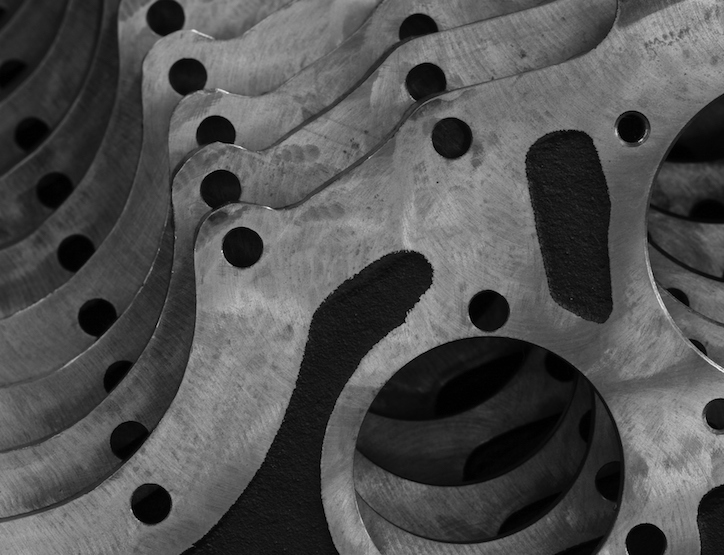
Low-Volume Manufacturing for Automotive Parts
In an era when car companies sell some 17 million vehicles a year in the U.S., it seems at first glance that there is little reason for the automotive components industry to explore low-volume manufacturing.
The reality is rather different. Niche vehicles and the development of new models drive a constant need for parts produced in small quantities.
This demand is a challenge for parts manufacturers because they have configured their production processes to turn out parts as quickly and cheaply as possible. Capital-intensive equipment with dedicated tooling minimizes cycle times, but at the expense of flexibility.
When the call comes to produce a few dozen pieces, it’s often hard to respond, which is why auto suppliers frequently have to turn to outside resources for low-volume production solutions.
What Drives the Demand for Low-Volume Manufacturing?
Small quantities of parts are needed for activities such as:
- Here they are used in test rigs to verify performance, often subsequently being destroyed for forensic analysis of surfaces and structures.
- Prototyping, to prove-out the look or fit of components, letting design and engineering better appreciate how parts will function together.
- Production of niche or halo vehicles (e.g., the Ford GT).
- Start-of-production. Initial volumes of a new model are often low and tooling for parts may not be ready.
The Tooling Impact
It’s hard to overstate the impact of tooling on auto parts production. Lead times are often measured in months and costs easily run into six figures.
This forces auto manufacturers to make decisions long before seeing any business. Understandably, they’re reluctant to do this until confidence in projected volumes is high.
Tooling orders are thus delayed, which leaves manufacturers in a position where they are unable to produce even the initial quantities they need.
This leads them to seek out alternative methods for low-volume manufacturing such as injection molding, CNC machining, and even 3D printing.
Is 3D Printing Even Really an Option?
Additive manufacturing processes have huge appeal for low-volume manufacturing since building a part one layer at a time eliminates the need for tooling.
This approach saves money, but many times the bigger impact is through lead-time savings. Dies for injection molding, casting and stamping are not only expensive, but can take weeks or even months to design, machine, harden, and test. A 3D printer, on the other hand, might take hours to produce a complex metal piece that could be cast in seconds, but it can be made today rather than weeks later.
Adding to the surge of interest in 3D printing are headlines such as GE’s 2015 announcement that it would “print” production parts for their jet engines. These should not be taken as proof that 3D printing can solve all low-volume manufacturing challenges. As a report in Fortune magazine explained, 3D printing let GE produce a highly complex — and presumably also high-value — component that couldn’t be made any other way.
Cost pressures in the auto industry, on the other hand, seem to limit the number of such opportunities for 3D printing vehicle components. There are some significant limitations to 3D printing for most automotive applications, particularly when it comes to the production of fully functional parts:
- Only a few metals and polymers are suitable for 3D printing, and these may not provide the required performance.
- If different materials are used in the final parts, the behavior and appearance will be different.
- After a process is selected, it is likely to become “locked-in” or “frozen” because once an auto maker has gone through PPAP (Production Part Approval Process), they’re reluctant to then approve a different process. (This means there’s a risk that the manufacturer will be committed to 3D printing, even as volumes rise.)
- 3D is slow and expensive, so really only suitable for very low-volume, high-cost parts.
- Manufacturing processes can influence the way a part performs. For example, machined internal corners can become stress risers while a 3D part while have radii. A cast finish will have different tribological properties to one that was printed.
Real Low-Volume Manufacturing Solutions for Automakers
The less exciting — but more effective — approach to low-volume manufacturing for automotive parts is to harness the flexibility of modern but proven manufacturing technologies while finding ways to reduce lead time.
One such scenario would be using slower but more flexible computer-controlled equipment rather than investing in dedicated automation and high-cost tooling. The production rate will be lower and the unit cost higher, but these costs should be assessed against the savings in equipment and tooling.
Another scenario would be purchasing less durable tools that can be delivered much faster — such as those made out of aluminum, rather than steel. These might produce only 10% of the volume from fully hardened tools, but would reduce lead time substantially.
Final Thoughts on Low-Volume Manufacturing
Automotive parts manufacturers often need to produce small quantities. These may be used in niche and halo vehicles, but more often they’re for development, testing, and production ramp-up.
Tooling costs and lead-time especially are challenges in such situations, prompting interest in emerging 3D printing technologies. These have a place in the development process, but should not yet be seen as a viable means of making parts.
Until costs fall, speeds increase, and more materials become available to 3D printers, no matter how advanced, automakers are better off using proven flexible production methods to meet their low-volume manufacturing needs.
To learn more about these proven methods — and to experience them at speeds that can’t be matched — contact us today.
